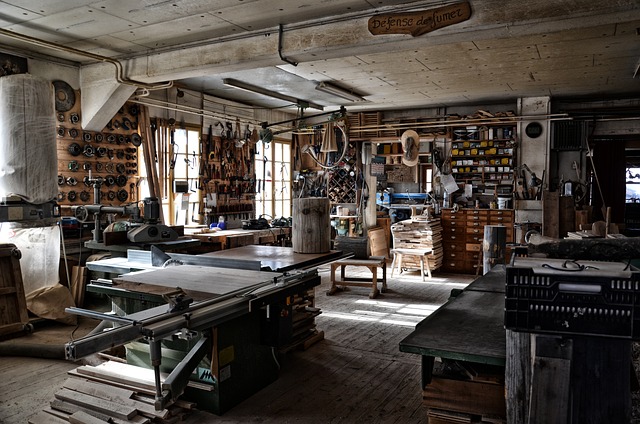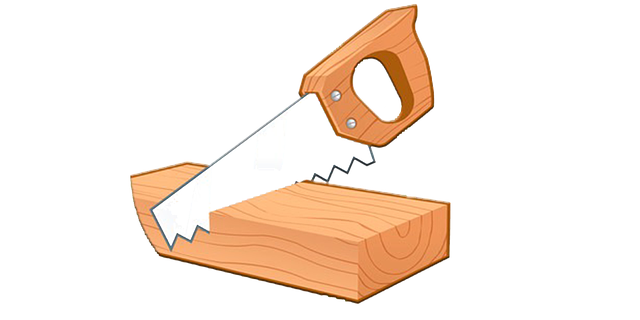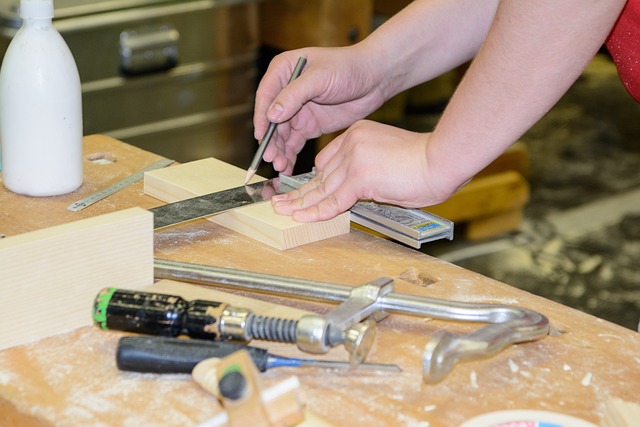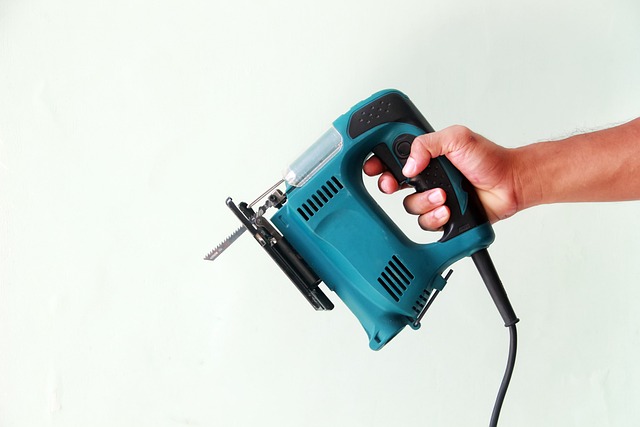In the field of carpentry, precision is key to achieving high-quality workmanship. A master expertise from Turnkey Renovators lies in their ability to make exact measurements and marks, which form the basis for all successful woodworking projects. The selection of precise measuring tools like tape measures, rulers, and laser distance measurers is essential for capturing dimensions accurately. Carpenters must also possess keen visual skills to correctly interpret these measurements onto their materials. Accurate markings made by carpenter’s pencils or marking gauges are crucial as they guide the cutting and assembly process, ensuring each piece fits perfectly within the structure. The use of squares, levels, and other layout tools is vital for confirming right angles and maintaining structural integrity. Digital advancements have introduced additional precise instruments like digital calipers and angle finders for projects with tight tolerances. The art of marking goes beyond the basics, requiring carpenters to adapt their techniques based on the type of wood and its characteristics to ensure clarity and avoid damage. An efficient layout, achieved through precise measurements and marks, along with a well-organized workspace, enhances both the speed and quality of the workflow, leading to superior results in carpentry projects.
Embarking on a carpentry project requires a blend of skill, precision, and attention to detail. This comprehensive guide delves into the fundamental techniques that underpin quality carpentry work. From mastering measures and marks to selecting the appropriate saws and ensuring accurate cuts, each stage is critical for crafting superior woodwork. We’ll explore essential marking methods, the importance of precise linear measurements, types of saws suitable for various tasks, and strategies for efficient layout work. Additionally, safety protocols with the right tools and equipment will be emphasized to maintain accuracy and quality. Carpenters will also discover joint techniques that guarantee strong and enduring results, culminating in the meticulous finishing touches that bring each project to life. Join us as we dissect the intricate dance between measurement, marking, cutting, assembly, and the final flourishes that define exceptional carpentry.
- Understanding the Essentials of Carpentry Measures and Marks
- The Precision of Linear Measurements in Carpentry Projects
- Mastering Marking Techniques for Accurate Cuts
- Types of Saws and Selection for Optimal Cutting
- Strategies for Efficient Layout Work in Carpentry
Understanding the Essentials of Carpentry Measures and Marks

When engaging in carpentry work, precision is paramount. A seasoned carpenter understands that the accuracy of measures and marks serves as the foundation for high-quality craftsmanship. The process begins with selecting the appropriate tools for measuring—such as tape measures, rulers, or lasers—ensuring each dimension is recorded with exactness. Carpenters must also possess a keen eye to interpret these measurements accurately on the workpiece. Marks made by carpenter’s pencils or marking gauges should be clear and discernible; they guide the cutting and assembly process, dictating where each piece will fit. The use of squares and levels is essential to check for right angles and proper alignment, ensuring structural integrity in every joinery. This meticulous attention to detail transforms raw lumber into functional and aesthetically pleasing structures. For carpenters, mastery over measures and marks is not just a skill but a discipline that distinguishes expert craftsmanship from the ordinary.
The Precision of Linear Measurements in Carpentry Projects

Precision in linear measurements is a cornerstone of successful carpentry projects. Carpenters rely on accurate measurements to ensure that each cut and assembly is perfect, as even the smallest miscalculation can lead to a poorly fitting joint or an unsatisfactory finish. The use of high-quality measuring tools such as tape measures, rulers, and laser distance measurers is essential in this trade. These instruments enable carpenters to measure lengths with extreme precision, which is critical when working on tasks that require tight tolerances like cabinet making, joinery, or constructing complex architectural details. The integration of digital technology has further enhanced the capabilities of carpenters; digital calipers and angle finders offer precise measurements for intricate projects, ensuring that every piece fits together seamlessly. This level of precision is not just about adherence to a set of specifications but also about the quality of craftsmanship that distinguishes a professional carpenter from an amateur. The commitment to accuracy in each measurement directly translates to the durability and aesthetic appeal of the final product, making it a fundamental aspect of the profession.
Mastering Marking Techniques for Accurate Cuts

When a carpenter approaches the task of marking wood for precise cuts, the precision and method of marking can significantly influence the outcome of the project. Mastery in marking techniques is not merely about drawing a line along the wood’s edge; it encompasses an understanding of the tools, materials, and processes that yield accurate, clean, and consistent marks every time. A skilled carpenter recognizes that the quality of the mark directly affects the quality of the cut. Utilizing tools such as pencils, marking gauges, and awls, a carpenter can create clear, distinct lines that serve as a guide for saws, chisels, or power tools. The angle and pressure applied when making these marks are critical; too steep an angle can lead to inaccuracies, while too much pressure can cause the mark to bleed through, obscuring the line and potentially ruining the piece.
To achieve the finest cuts, a carpenter must consider the type of wood being marked. Different woods have varying densities and grain patterns that influence how they accept marks. Softwoods, for example, may require a firmer touch to ensure the mark is visible, while hardwoods might need a more delicate approach to prevent the wood from splintering or breaking along the intended cut line. The carpenter’s experience and familiarity with these characteristics enable them to adapt their marking technique to the material at hand, ensuring that each mark leads to a flawless fit in the final assembly of the project. This proficiency in marking is not just a skill but an art form that, when executed correctly, contributes to the integrity and beauty of the carpenter’s work.
Types of Saws and Selection for Optimal Cutting

Strategies for Efficient Layout Work in Carpentry

Experienced carpenters understand that efficient layout work is a cornerstone of high-quality craftsmanship in carpentry. To optimize this process, carpenters employ several strategic approaches. Firstly, careful measurement and marking are essential to avoid errors that could lead to misalignment or an ill-fitting final product. Carpenters should always use the most accurate measuring tools available, such as tape measures, rulers, and squares, ensuring precision from the outset. Additionally, carpenters often use layout templates or full-size patterns derived from blueprints to transfer dimensions directly onto materials. This technique not only saves time but also enhances the consistency of the work.
Another strategy for efficient layout work involves organizing the workspace and tools meticulously. A tidy and well-arranged area reduces the time spent searching for necessary equipment, which can otherwise disrupt the flow of work. Carpenters should also familiarize themselves with their tools, selecting those that minimize effort and maximize precision, such as pencils with good grip and ergonomically designed marking gauges. By implementing these strategies, carpenters can streamline their layout process, leading to faster completion times and superior craftsmanship in their carpentry projects.
In conclusion, mastery in carpentry hinges on a precise application of measures, marks, and strategic layout work. A carpenter’s ability to accurately interpret blueprints, make linear measurements, apply effective marking techniques, and select the appropriate saws are all critical components that ensure high-quality workmanship. By understanding these essential aspects, a carpenter can navigate through each project with confidence and precision. The proficiency in these areas not only streamlines the cutting and assembly process but also contributes to the longevity and functionality of the final product. As such, it is clear that integrating these skills into one’s repertoire is indispensable for success in the carpentry field.
